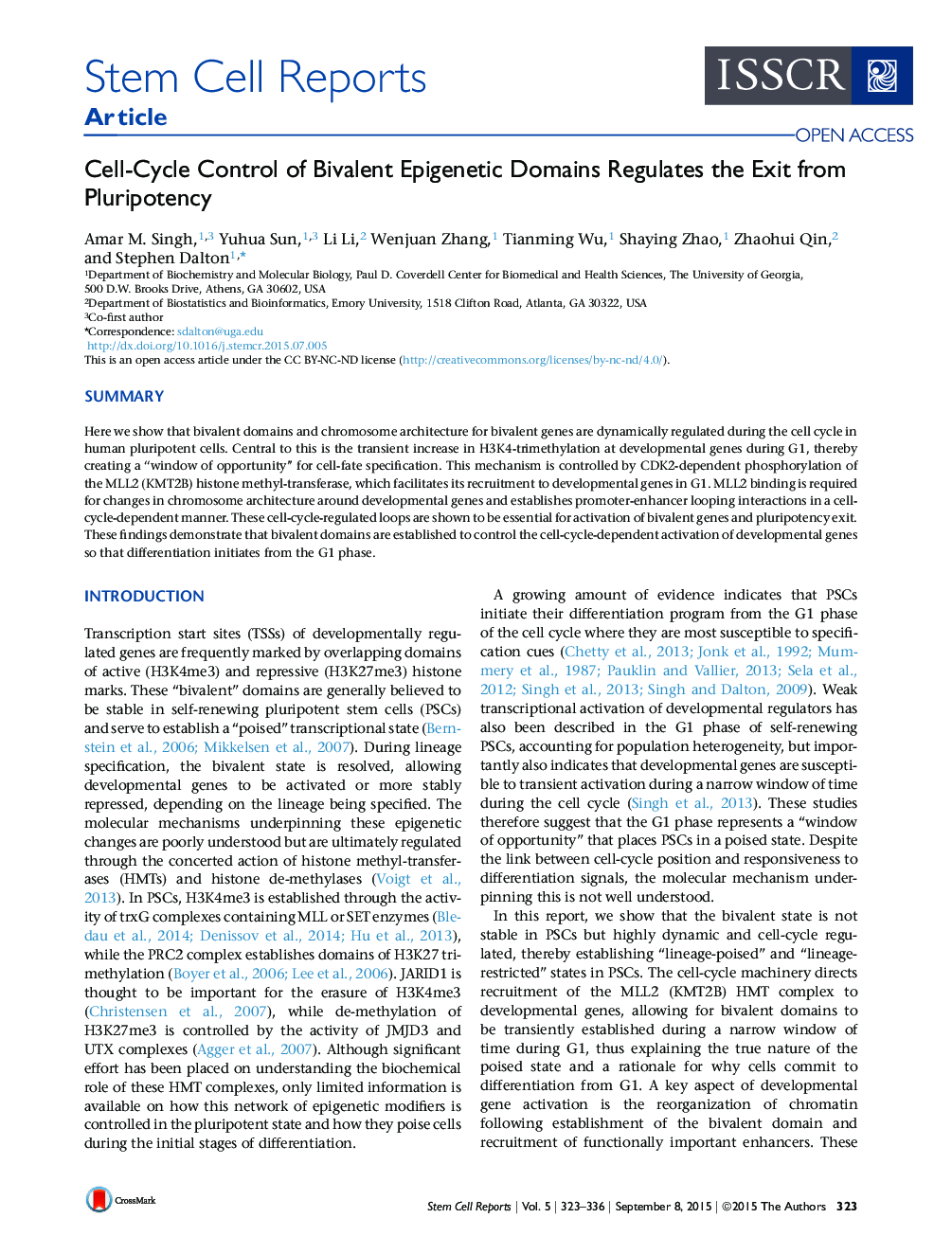| Article ID | Journal | Published Year | Pages | File Type |
|---|---|---|---|---|
| 2093402 | Stem Cell Reports | 2015 | 14 Pages |
•Bivalent domains are unstable, dynamic, and cell-cycle regulated•CDK2 phosphorylates MLL2 and establishes bivalent domains in G1•Chromosome remodeling in G1 is required for the “poised” pluripotent state
SummaryHere we show that bivalent domains and chromosome architecture for bivalent genes are dynamically regulated during the cell cycle in human pluripotent cells. Central to this is the transient increase in H3K4-trimethylation at developmental genes during G1, thereby creating a “window of opportunity” for cell-fate specification. This mechanism is controlled by CDK2-dependent phosphorylation of the MLL2 (KMT2B) histone methyl-transferase, which facilitates its recruitment to developmental genes in G1. MLL2 binding is required for changes in chromosome architecture around developmental genes and establishes promoter-enhancer looping interactions in a cell-cycle-dependent manner. These cell-cycle-regulated loops are shown to be essential for activation of bivalent genes and pluripotency exit. These findings demonstrate that bivalent domains are established to control the cell-cycle-dependent activation of developmental genes so that differentiation initiates from the G1 phase.
